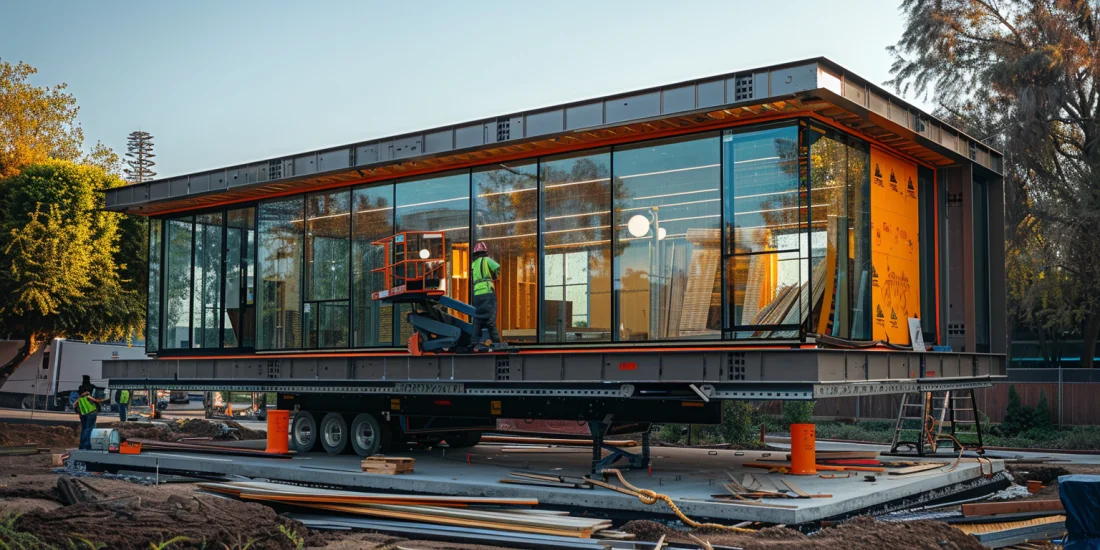Construction prefabrication involves assembling building components in a factory setting before transporting them to the construction site for installation. This method offers numerous benefits, including improved efficiency, reduced waste, and enhanced quality control. By manufacturing parts off-site in a controlled environment, prefabrication mitigates many challenges associated with traditional construction methods, such as weather delays and labor shortages. Additionally, this approach supports sustainability by optimizing material usage and minimizing site disturbance.
The prefabrication process has evolved significantly with advancements in technology. Modern techniques include the use of digital tools for precise design and manufacturing, ensuring that components fit together seamlessly upon arrival at the construction site. This evolution has made prefabrication an increasingly popular choice for various construction projects, ranging from residential buildings to large-scale commercial developments. As the industry continues to embrace innovation, the role of prefabrication in construction is expected to grow, offering new possibilities for efficiency and sustainability.
Benefits of Construction Prefabrication
Prefabrication in construction provides multiple advantages that make it an attractive alternative to traditional methods. Firstly, it enhances project efficiency by allowing simultaneous off-site manufacturing and on-site preparation. This parallel processing shortens construction timelines and reduces labor costs. Additionally, prefabrication improves quality control since components are manufactured in a controlled environment with consistent standards and supervision.
Another key benefit is the reduction of waste. In a factory setting, materials are optimized, and processes are standardized, leading to more efficient use of resources. This results in less waste compared to traditional on-site construction. Furthermore, prefabrication contributes to sustainability by minimizing site disturbances, such as noise and dust, thus reducing the environmental impact of construction activities.
Improving Safety and Reducing Risks
Safety is a critical concern in the construction industry, and prefabrication helps address this by transferring many hazardous tasks from the site to a controlled factory environment. This shift significantly reduces the risk of accidents and injuries associated with on-site construction.
Moreover, prefabrication minimizes the exposure of workers to adverse weather conditions, which can pose significant risks on traditional construction sites. By reducing the time spent on-site, the likelihood of weather-related delays and hazards decreases. This controlled environment also allows for better planning and implementation of safety measures, contributing to overall risk reduction.
Enhancing Quality and Precision
One of the primary advantages of prefabrication is the ability to achieve high levels of quality and precision. Components are manufactured using advanced machinery and technology, ensuring consistent quality and accurate dimensions. This precision reduces the need for on-site adjustments and modifications, leading to faster assembly and fewer errors.
The controlled factory environment allows for stringent quality control measures. Inspections and tests can be conducted systematically, ensuring that each component meets the required standards before leaving the factory. This level of control is challenging to achieve with traditional on-site construction methods, where varying conditions can affect quality.
Economic and Environmental Benefits
Construction prefabrication offers significant economic benefits. By reducing construction time and labor costs, projects can be completed more quickly and within budget. The efficiency of the manufacturing process also translates to cost savings on materials and waste disposal. These financial advantages make prefabrication an appealing option for developers and contractors.
In terms of environmental benefits, prefabrication supports sustainable construction practices. The efficient use of materials reduces waste, and the ability to recycle and repurpose materials in the factory further minimizes environmental impact. Additionally, prefabrication reduces site disturbances and emissions from construction activities, contributing to greener and more sustainable building practices.
Future Trends in Prefabrication
The future of construction prefabrication looks promising with the continuous integration of advanced technologies. Innovations such as Building Information Modeling (BIM), 3D printing, and automation are poised to revolutionize the prefabrication process. BIM allows for detailed planning and coordination, ensuring that prefabricated components fit seamlessly into the overall project. 3D printing enables the creation of complex and customized components with high precision.
Automation and robotics are also playing an increasingly significant role in prefabrication. Automated manufacturing processes enhance efficiency and accuracy, reducing reliance on manual labor.
Key Takeaways
– Prefabrication enhances construction efficiency, quality control, and sustainability by manufacturing components in a controlled environment.
– It improves safety by shifting hazardous tasks from the site to the factory, reducing on-site risks and weather-related hazards.
– High precision and consistent quality are achieved through advanced manufacturing technologies and stringent quality control measures.
– Prefabrication offers economic benefits through reduced construction time, labor costs, and material waste, making it a cost-effective option.
– Future trends include the integration of BIM, 3D printing, and automation, driving further advancements and efficiencies in prefabrication.



